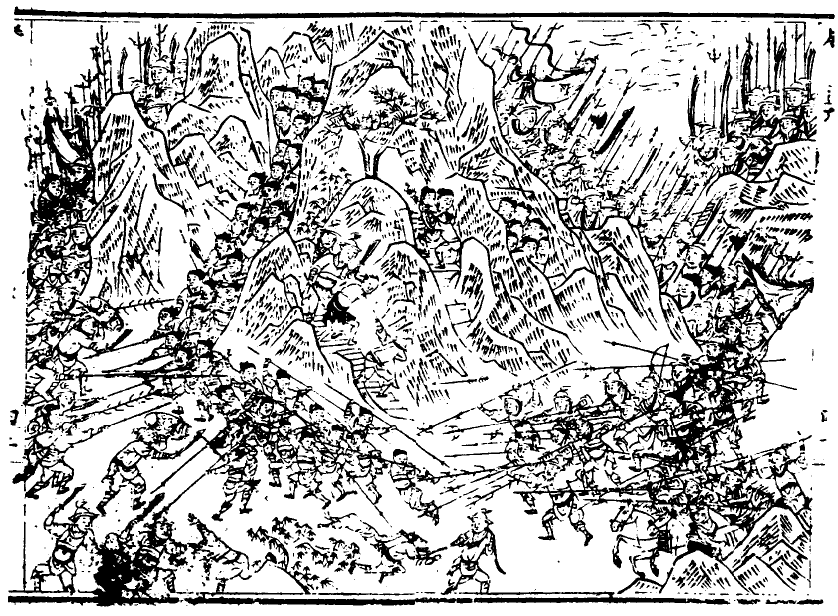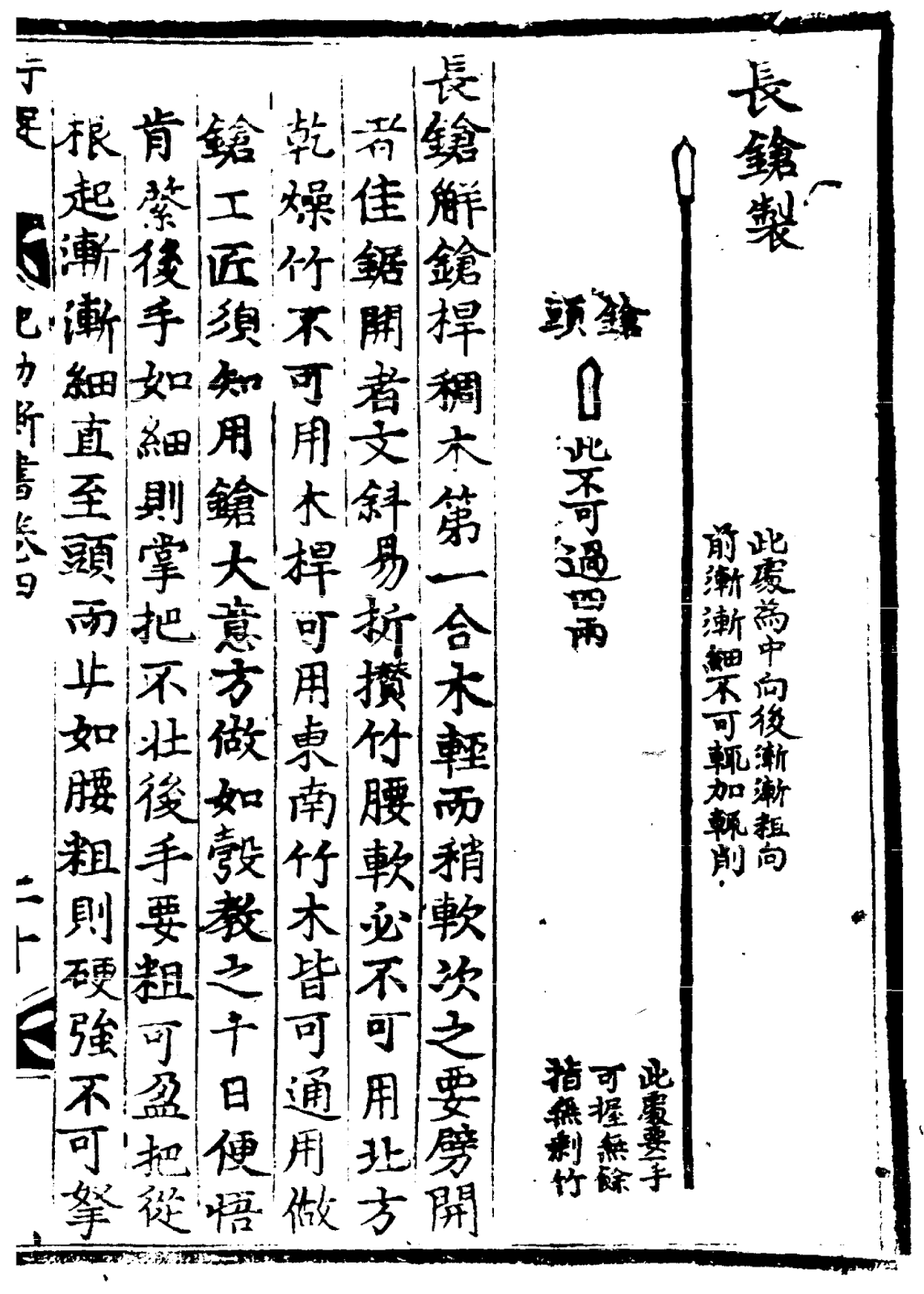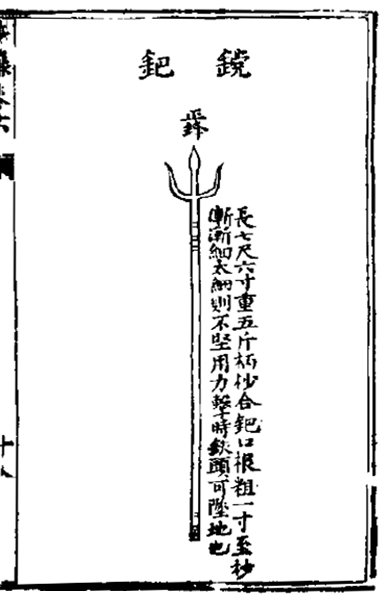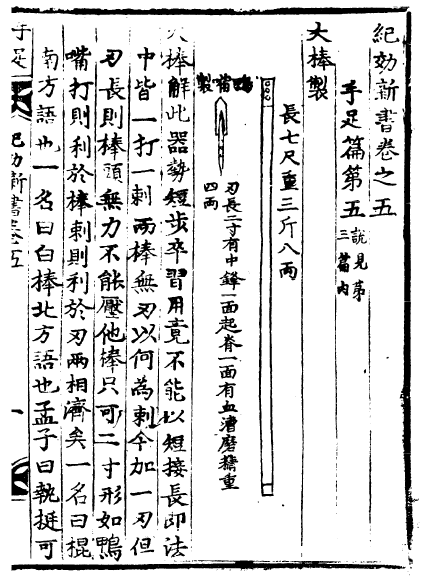The three principal equipments of a Chinese
Teng Pai Shou (藤牌手, rattan shieldman) are his Teng Pai (藤牌) shield, his Yao Dao (腰刀) sword, and his Biao Qiang (鏢鎗) javelin.
Teng Pai (藤牌, lit. 'Rattan shield')
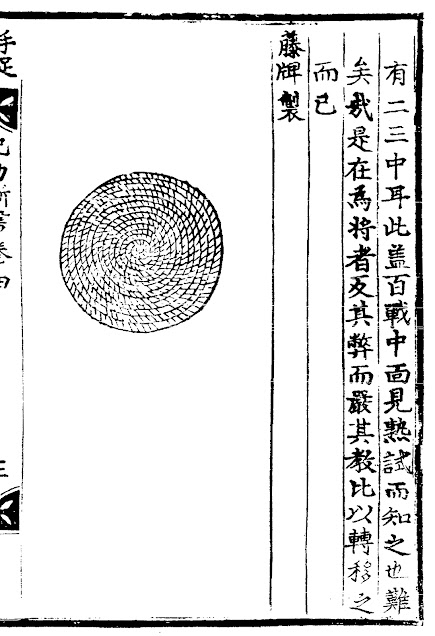 |
| Drawing of a Teng Pai, from 'Ji Xiao Xin Shu (《紀效新書》)'. |
Originated from Fujian province, the Teng Pai was one of the more common shield types used by the Ming army. Rattan/wisteria shield outperforms wooden shield in almost every conceivable way—it is cheaper, lighter, more flexible, and sturdier than wooden shield, plus it does not splinter nor split along the grain (as rattan has no wood grain). However, rattan cannot grow in North China (which is colder and drier), so Ming troops from that region had to settle for
Tuan Pai (團牌, lit. 'Round shield'), a variant that is made of woven wicker and covered with leather or rawhide.
Average size of a Ming period rattan shield is two
chi five
cun to three
chi in diameter. Chinese rattan shield usually does not feature metal shield boss (although exceptions do exist), unlike similar shields in Tibet and Southeast Asia region.
Yao Dao (腰刀, lit. 'Waist sabre')
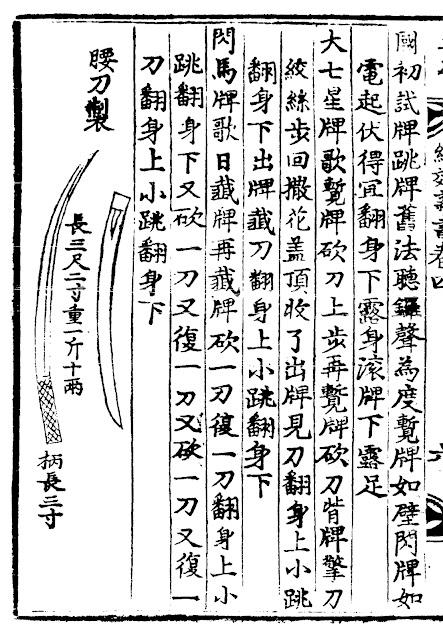 |
| A Yao Dao and scabbard, from 'Ji Xiao Xin Shu (《紀效新書》)'. |
Yao Dao is a generic name for one-handed Chinese
sabre normally used in conjunction with a rattan shield.
Biao Qiang (鏢鎗, lit. 'Javelin')
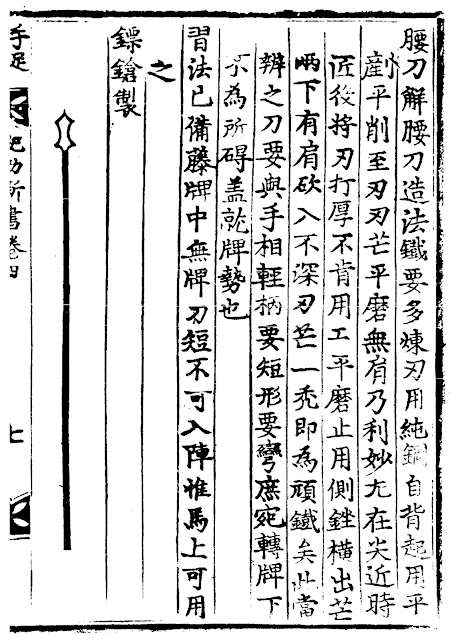 |
| Drawing of a Biao Qiang, from 'Ji Xiao Xin Shu (《紀效新書》)'. |
Also known as
Fei Biao (飛鏢, lit. 'Flying dart'), Biao Qiang is a type of light javelin. Its primary purpose is to distract the enemy. However, it can still be lethal if it hits an unprotected vital spot.
